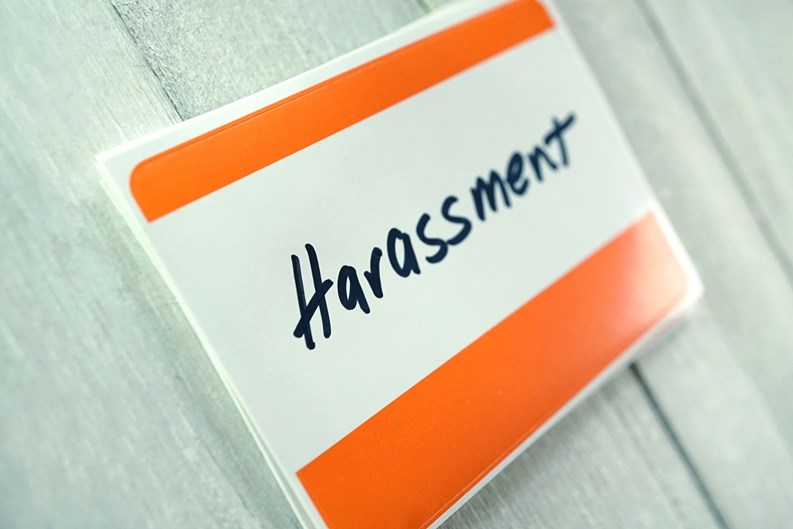Whether you live in a super-luxe Park Avenue co-op in New York City, a beach-front condo in Florida, a sprawling HOA in Nevada, or a multifamily community in the Berkshires, one thing is certain: you have neighbors. Hopefully they’re the people you grill with on a summer afternoon; the providers of a spare cup of sugar when you run out; the folks who water your plants when you leave town … some even might have attended your child’s wedding or helped you through trying times. But regardless of the size, location, or overall cohesion of your community, at some point you’re likely to have at least one neighbor who disrupts the harmony and infringes on the peaceful enjoyment of your home.
While most of us in multifamily housing have come to accept this inevitability as a cost of communal living, there are some situations that cross the line from minor nuisance to legitimate harassment. Knowing the difference is important—but it can be tricky to discern, and even more difficult to address. After all, ‘harassment’ is a term that gets thrown around a lot, but is often a subjective disputation. One person’s ‘persistence’ or style of conflict management can be another’s criminal complaint.
Harassment: Difficult to Identify, Harder to Prove
Adding to the interpersonal complexity, the legal system deals with harassment in different ways, depending where you reside and the type of harassment being alleged. Laws on harassment vary by state, and levels of criminality can differ within those jurisdictions.
In New York State, for example, according to several attorneys consulted for this article, there is no civil cause of action for harassment. That means that any action taken against an accused harasser must be pursued as a criminal case. Depending on a number of factors, the harassment can be prosecuted as a misdemeanor, a violation, or a felony.
Under New York’s Human Rights Law, sexual harassment, discriminatory harassement, or any type of harassment that rises to the level of violence is considered criminal—and as such should be reported immediately to the police. The New York City Commission on Human Rights defines discriminatory harassment as “threats, intimidation, harassment, coercion, or violence that interferes with a person’s civil or constitutional rights and is motivated in part by that person’s actual or perceived race, creed, color, national origin, gender, sexual orientation, age, disability, or alienage or citizenship status, or other protected status.”
Mark Hakim, a New York City attorney with the firm of Schwartz Sladkus Reich Greenberg Atlas specializing in community law, defines criminal harassment as “the intent to harass, annoy, or alarm another person in or about public places, engage in conduct, or repeatedly commit acts which alarm or seriously annoy the victim, and serve no legitimate purpose.” He notes that proving criminal harassment is often a matter of proving the perpetrator’s intent or purpose—which can be very difficult in the absence of any substantive indication of what someone is thinking or feeling in a given moment. That means that “the same behavior repeated in different circumstances may be harassment in one case, but not in the other,” Hakim continues.
Ellen Shapiro, a partner at the law firm of Goodman, Shapiro & Lombardi, which has offices in Massachusetts and Rhode Island, has a similar perspective. She says, “Harassment is a very personal issue. What of course may be harassment to one person may merely be conversation to another.”
Often, the attorneys indicate, it comes down to context and language. Michael C. Kim, of counsel at Schoenberg Finkel Newman & Rosenberg, LLC, in Chicago, says that “it could even be a matter of personal style—like in a restaurant where a server calls a customer ‘dear’ or ‘honey.’ In certain contexts, that’s not necessarily problematic; nothing inappropriate is being suggested. But in other contexts, where that kind of familiar behavior isn’t normalized or expected, it isn’t appropriate.”
Chris Florio, attorney with Stark & Stark in Lawrenceville, New Jersey, equates harassment with the bullying that children unfortunately might experience from their peers. Contrary to the “sticks and stones” adage that we all followed in grade school, words can and do hurt. When hurtful words are used repeatedly over time against an individual without provocation, it can constitute harassment. Florio defines a harasser as “someone who is consistently abusive or insulting to you,” adding that the legal definition of harassment “is no different in a multifamily building.”
Harassment in Housing
Unlike New York, New Jersey has arbitration requirements when it comes to disputes involving housing. Florio explains that his state’s Condo Act stipulates that “any type of housing-related dispute must be provided alternative dispute resolution, or ADR [before escalating to litigation]. Almost anything that happens in a condo can trigger this”—including an accusation of harassment.
In the Garden State, when conflicts arise between residents—including those involving board members or building employees—the ADR clause goes into effect. In this process, the parties must meet with an independent arbitrator or mediator to come up with a mutually satisfactory resolution. The ADR option is available to anyone involved in any civil dispute, of course—but in New Jersey condos, co-ops, and HOAs (in addition to rental apartments and other types of housing), the process is mandatory before a case can be considered for escalatory processes.
If the harassment is discriminatory in nature, or if ADR fails to remedy the situation, “it would be incumbent upon the association to act,” adds Florio. Especially if the harassment was taking place in a building or community’s common areas, he says, it is the board’s responsibility to either invoke remedies or penalties stipulated by the community’s governing documents, or to refer the case to the proper authorities.
Shapiro agrees that escalation is warranted when the harassment occurs in ‘public,’ or outside of an owner’s or shareholders home, but still on the condo, HOA, or co-op property. She points out that “harassment in a multifamily environment has two aspects to it: One, when something happens in a common element (as opposed to strictly between two individuals within the confines of a unit, or not observed by anyone else); and two, if the incident rises to the level of discrimination.” In situations where either or both of those aspects are present, the person being harassed can file an application for Criminal Complaint of Harassment in local district court within the states where Shapiro practices law.
In Illinois as well, Kim concurs that in a multifamily setting, “it often depends on the location where the incident occurs. If it occurs in a common area—a hallway or lobby for instance—we could treat that as a nuisance being created by the offending owner. We don’t want people walking through the lobby screaming and yelling at fellow owners. If it occurs in common areas, the board clearly has the authority to regulate behavior and prohibit it.”
Kim asserts that most condominium declarations in Illinois have anti-nuisance provisions, allowing boards to take action in situations that cause any kind of disturbance to unit owners arising from common areas. In states where cooperative housing is prevalent, like New York, proprietary leases also generally include a warranty of habitability, which similarly affords residents quiet enjoyment of their homes, in addition to functioning mechanicals and utilities and the like that the building or corporation supplies. Hakim proposes that in the co-op context, “there may be instances where the actions of another resident or shareholder causes a breach of that warranty, and the cooperative could be liable.”
In such cases, he says, “the cooperative’s board should intervene—but not over-intervene. If a board overreaches, the shareholders or residents may assert that the board acted outside the scope of its authority. It is a delicate balancing act that each board and all [managing] agents must deal with on a daily basis.” Hakim recommends that boards and managers carefully address all instances of potential harassment with legal counsel and maintain an arm’s length of separation as the examination of the incident or incidents proceeds. Since there is no “one size fits all” approach, each case should be handled as the individual circumstances warrant.
Shapiro recommends the same course of action. “These are extremely fact-driven situations,” she says. “No one answer fits all.”
Case by Case
Beyond being the locus for disputes between neighbors, as housing providers and (in many cases) employers, condominiums, housing associations, and co-ops can find themselves in the middle of costly discrimination or harassment suits. And with their representative governance structure of a micro–democratic state, board members are prone to being both targeted by and accused of harassing behavior. Each of these permutations requires a different approach to resolution. Here are some real-world examples.
Bart Steele, CMCA, AMS, a portfolio manager at Boston-based Barkan Management, recalls a time when the only elevator at a building he was managing stopped working on a Friday night. “The elevator was nearly 90 years old, so a part that was needed for repair had to be custom made, and thus the elevator had to be shut down for the weekend. Cut to the board being harassed throughout—in hallways, stairwells, even at their units—by residents who were personally angry at them, as if the breakdown was the board’s fault. The attitude of many residents seemed to be basically, ‘I pay my condo fees, and it’s your job to make sure that the elevator works; there are elderly residents who you’re ignoring,’ et cetera. People were posting nasty messages in the halls, on the elevator doors, and on board members’ doors.”
Apparently these residents forgot—or disregarded—that their building’s policy stipulated that complaints be sent to management, who would then filter issues to the board as necessary. Steele notes that such a policy “is especially helpful due to the massive volume of email traffic—especially at larger buildings—and also allows us to document everything that transpires.” Additionally, he continues, “The board spends a lot of its time doing unpaid work, and when not acting in official board capacity, members do not like to be bothered in the hallway, or have folks come to their units and interrupt their personal spaces.” So Steele put out a building-wide notice advising all residents of the proper communication protocol. “We reminded them that they should never be bothering the board at their units about building issues,” he conveys. “The board puts in a lot of unpaid time in order to increase the value of everyone’s investment, and for that they deserve thanks, not criticism.”
In another example, a New York City resident was accused of harassing the board of her building with her practice of repeatedly sliding notes under their doors whenever she had a complaint. When this resident wrote to The New York Cooperator, for advice, attorney Rachael Ratner, a colleague of Hakim’s at SSRGA, advised that while the behavior is not likely to be considered harassment in the criminal sense, the resident still might be in violation of her building’s bylaws or proprietary lease. Usually such documents will prescribe a proper method of communicating with the board, with ‘notice’ provisions that contain specific instructions on how to send correspondence.
“Following these instructions offers two advantages,” says Ratner. “First, the board becomes legally charged with having been put on notice about the issues and/or complaints raised by [the] correspondence. Second, you’re much more likely to succeed in getting your message across.” Since board members are themselves usually owners or shareholders and are volunteering their time in service to their communities, following proper protocol has mutual benefits for both senders and recipients of complaints, in addition to being much less likely to generate accusations of harassment. Ratner adds that “it’s also a good idea to read your house rules to determine if complaints are required to be sent to your building’s managing agent,” as was the case with the Boston-area condo that Steele managed.
In the state of Nevada, where housing associations and condos are regulated by the Nevada Real Estate Division (NRED), the agency gets involved in complaints or disputes about board actions or behavior to ensure that all directors are abiding by their fiduciary obligations. Sheila Van Duyne, owner of the Van Duyne Law Group in Reno, Nevada, describes a situation where an angry owner filed more than 100 letters of complaint with their board. Aside from the borderline-harassing substance of the complaints, their volume and frequency interfered with the timely and efficient operation of the association. Additionally, each one had to be presented to the NRED, requiring the time and resources to go through that process, not to mention the money that the association had to pay for such interventions. On top of all that, every single complaint was unsubstantiated. While not rising to the level of criminality, such behavior costs the entire association—not only in terms of money, but also in terms of good will and harmonious living.
Kim recounts a case where a Chicago resident-owner was exchanging emails with the condo’s property manager that, says Kim, “essentially included salutations, closings, and references in text that could be considered overly familiar.” After Kim sent the owner a letter asking him to “modify his communication techniques,” the inappropriate verbiage ceased, but so did the owner’s cordial attitude toward the manager.
“It’s a tough call, because where’s the magic boundary line?” asks Kim. One clue is, in a word, context. “When an employee isn’t welcoming of the informality,” notes Kim, “it’s risky to use such language without having that background [that would imply a more familiar relationship]. In a high-rise, urban environment, for example. … If you’re using, for lack of a better term, ‘words of endearment,’ they’re not offensive in the same sense as situations when someone uses words of vulgarity or things like that, but it just sets a different kind of tone.
“There’s nothing wrong with a cordial relationship with a manager,” Kim continues, “but at the same time you have to be careful that the language that you use is not overly familiar, which can be a distraction to the recipient. Some people are very used to positive expressive language, but the reality is that others see it as overly familiar and inappropriate, getting close to stepping over boundaries. It becomes a starting point for more problematic language or behavior.”
One somewhat high-profile case of unequivocally problematic language and behavior involved a Queens, New York, condo whose house rules included a provision requiring owners to prove their immigration status—in clear violation of New York City’s Human Rights Law. This situation came into public focus in 2018 when the building’s manager, Neal Milano, took it upon himself to plaster the building’s lobby with propaganda and images that included references to Nazi Germany and other fascists governments. According to reporting by the Daily News, he also harassed residents based on their immigration status, national origin, and race.
After a complaint was brought to the city’s Commission of Human Rights, Milano was forced to resign and remove all of the offensive posters, replacing them with notifications of the city’s fair housing policies and basic owners’ rights. Two board members of the condo also implicated in the discriminatory behavior were forced to resign from their board positions as well. The condo association was required to amend its house rules, removing the discriminatory provision to adhere to the city’s Human Rights Law. Sapna V. Raj of the law enforcement arm for the Commission of Human Rights at the time was quoted as saying, “We hope this settlement sends a strong message to housing providers citywide that New York City does not tolerate discrimination or harassment, and that we will not hesitate to take immediate action when we learn of violations.”
You Can’t Spell ‘Harassment’ without ‘Ass’
According to the attorneys interviewed for this article, and as evidenced by the cases cited, what carries someone’s unwelcome behavior up to the level of harassment can be summarized as language, context, and intent. An annoying neighbor who constantly plays loud music or insults your front yard plantings or asks for outlandish favors might not be harassing you—he just might be an inconsiderate ass. But if the music persists after repeated—and documented—requests to cease and desist; or if the horticultural slights contain vulgarities or hostility; or if the solicited favors cross over into ‘too familiar’ territory, you would be well advised to escalate the situation to your property manager, the board of directors, and the local law enforcement authorities—and possibly all three, depending on the degree and persistence of the problem.
Board members in all states should be aware of recent changes in federal law that require a condo, homeowners association, or co-op to act when a resident who falls within a protected class is harassed in the community. The U.S. Department of Housing and Urban Development (HUD) established regulations in 2016 requiring all housing providers to investigate harassment complaints and take appropriate action. Failing to do so can land the board in costly and serious litigation if the target of harassment sues the association or files a complaint with HUD. Therefore, it is best to address any reports or complaints of harassment with legal counsel right away.
Massachusetts’s harassment prevention law is known as Chapter 258E. The state offers a region-specific resource guide
(www.mass.gov/doc/209a-258e-resource-guide) to assist anyone who feels they or someone they know has been the victim of harassment or abuse.
Darcey Gerstein is Associate Editor and a Staff Writer for New England Condominium.







Leave a Comment